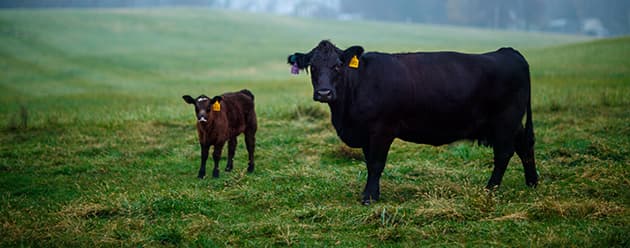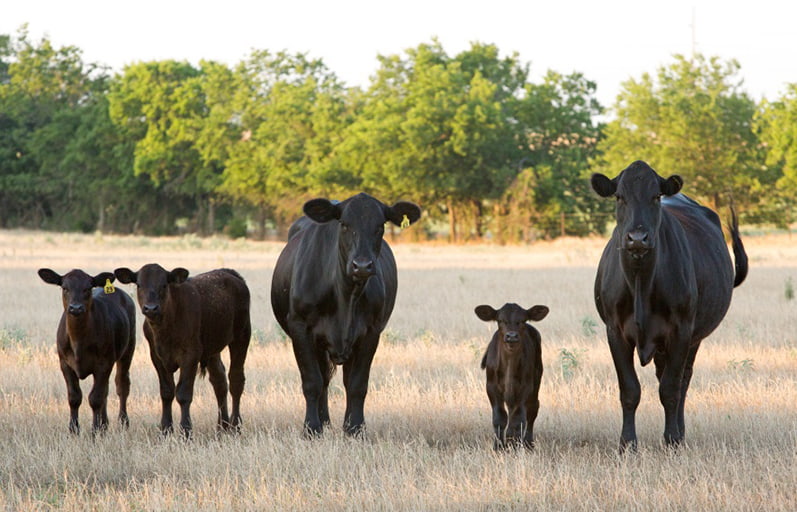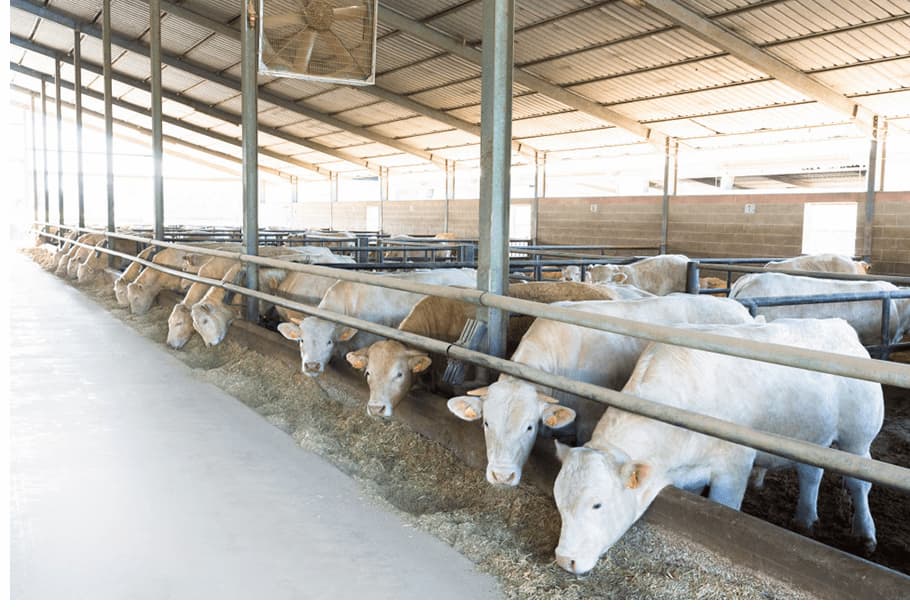
A Closer Look At The Beef Cattle We Help Care For
December 15, 2016
As part of our series about the animals we care for at Zoetis, let’s take a closer look at beef cattle.
As part of our series about the animals we care for at Zoetis, let’s take a closer look at beef cattle.
Some people might think that “a cow is a cow,” but there are differences between dairy cattle and beef cattle. Dairy cattle are raised for milk production, and beef cattle are raised for the production of meat. Although beef and dairy cattle share some common health and productivity goals, some are different. This is in part because cattle are raised in distinctly different production systems around the world. One example of the difference in systems is some cattle are raised in a pasture and some are raised in confinement. Read on to learn more about beef cattle.
Health throughout the life cycle
Zoetis works to assure a safe, sustainable global food supply by providing products and services that contribute to healthy beef cattle. This begins even before birth. For some diseases, a healthy and vaccinated cow can help protect an unborn fetus as well as pass on protective immunity to her calf. After birth, attention turns to the calf.
Beef cattle usually spend the first part of life on pasture, where they graze on grass and almost certainly are exposed to different types of parasites. Producers can lose as much as $3 billion annually from parasites due to weight loss, poor feed conversion, and increased disease.1 Zoetis provides solutions like DECTOMAX® and CYDECTIN®, parasiticides that control a broad spectrum of internal and external parasites.
In many markets, beef production systems often involve the movement of animals. This results in exposure to other animals, which makes helping to prevent infectious disease paramount. That’s why in the United States, Zoetis offers SelectVAC®. SelectVAC® is the beef industry’s No. 1 branded preconditioning program, combining cattle vaccination and management services to prepare calves for weaning and shipping. SelectVAC® helps deliver healthier cattle for buyers and greater profits for ranchers.
Like other livestock farming, keeping a herd of beef cattle healthy involves working with a veterinarian to implement programs to help prevent disease and then control any outbreaks through appropriate management and medication.
Zoetis delivers products for beef cattle in several key therapeutic areas—vaccines, parasiticides, and antibiotics. Additionally, Zoetis provides genetic testing. Genetic testing helps cattle breeders to make decisions about their herds and also helps create a sustainable industry through healthy and productive cattle.
Common diseases

One of the most prevalent and damaging diseases which can affect beef cattle is Bovine Respiratory Disease (BRD), a complex syndrome stemming from respiratory infections. Several factors contribute to BRD including stress, viral infections,
and bacterial infections. Zoetis scientists developed DRAXXIN®, an antimicrobial that has been shown in clinical studies to provide efficacy in treating cattle with BRD. To help prevent cattle from contracting BRD, Zoetis also offers innovative vaccines such as INFORCE™ 3, OneShot®, and Bovishield®.
Parasites afflict beef cattle worldwide, but especially in temperate regions. Parasites affect cattle health, productivity, and reproduction. The economic burden of internal parasites on Australian beef producers is estimated to be $38 million. For example, Cooperia spp, or small intestinal worm, is the most prevalent cattle parasite in Australia2, according to WormTRAX™, Zoetis’ cattle parasite tracking program in Australia. This parasite causes diarrhea, dehydration, and weight loss in beef cattle.
Prevention of illness is an increasingly important aspect of modern livestock farming. Zoetis is significantly investing in ways to bring the most up-to-date prevention tools to beef producers. In addition, Zoetis offers highly effective treatment options to address susceptible diseases that cattle may contract.
Productivity and sustainability
.jpg) Beyond improving the health of beef cattle, Zoetis works to improve the productivity of beef cattle with products such as ACTOGAIN™ and SYNOVEX®, which help to positively impact the sustainability of the industry. Healthy and productive cattle reduce the potential environmental impact of beef production, leading to the best use of natural and economic resources.
Beyond improving the health of beef cattle, Zoetis works to improve the productivity of beef cattle with products such as ACTOGAIN™ and SYNOVEX®, which help to positively impact the sustainability of the industry. Healthy and productive cattle reduce the potential environmental impact of beef production, leading to the best use of natural and economic resources.
Future of healthy beef cattle
The future market for beef is one of growth. Globally, beef is perceived as a premium protein in places with growing populations and economies. As the population grows, so too will the demand for beef. As the beef industry grows, farmers and veterinarians will likely seek more preventative health and increased performance measures to ensure beef is produced in the safest, most economical and efficient way possible. This means more vaccines to help prevent disease before it happens, more genetic testing to breed healthier animals, and increased performance and efficiency in production systems.
As prevention becomes more prevalent, scientists are researching innovative health tools like immunomodulators as potential alternatives to antibiotics. Immunomodulators treat disease through manipulating the body’s own immune system. Unlike vaccines, immunomodulators work broadly; they alert the body’s natural defense system to generally cope better against disease.
Learn more
To learn more about beef cattle at Zoetis, check out these links:
1 Source: Data Reference: Bagley C, Healey MC, Hansen D. Beef Cattle Handbook: Internal parasites in cattle. Iowa Beef Center. 1999. Accessed 12/14/16.
2 Source: http://www.beefcentral.com/production/nutrition-and-animal-health/animal-health-new-online-worm-tracker-advances-cattle-parasite-id-and-treatment/ Data Reference: Sackett D, Holmes P, Abbott K, Jephcott S and Barber M 2006. Assessing the economic cost of endemic disease on the profitability of Australian beef cattle and sheep producers. Meat and Livestock Australia. North Sydney. ISBN: 1741910021. Project Code: AHW.087. http://tinyurl.com/sackett-mla-report. Accessed 12/14/16.